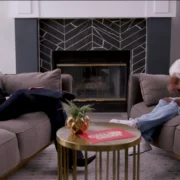Generation Black TV - Live
--- Main Blog Content Below ---
Black inclusion in fine arts museums, galleries, and mainstream awards has been a challenge since day one, and there’s still a lot to be done in the fight against systemic racism.
Prejudice against Black artists has made it difficult for indie Black artists to make it big in painting, illustration, music, filmmaking, photography, and perhaps many more conceivable artistic industries.
On the other hand, it could be said that Black inclusion has many more supporters in the present day than it did three decades ago.
In recent times, the newfound support for the African Diaspora in art exhibitions has made some question whether Black inclusion is genuine or just a sellable fad.
The start of the Black inclusion in art trend could be tracked more concretely to the aftermath of George Floyd’s death in mid-2021.
Major entertainment companies were silent at first but then issued statements of solidarity to support the Black Lives Matter movement.
The protests have quieted in 2022, but museum curators, network producers, and media companies remain committed to racial inclusion and justice.
Programs for Black talent cultivation are being released every now and then, including the Jonas Gwangwa Music Composition Initiative.
The key to achieving true Black inclusion in art is to give Black artists more power behind the scenes, not necessarily as much in front of them. More Black directors, producers, and, most importantly, museum curators must be included.
Blackness has become a buzzword that could open doors for many Black artists pitching Black stories but could also come at the cost of diluting the essence of the work of art to appeal to a white core audience,
Chad Sanders described this in his Time magazine article, which mentioned how, as a scriptwriter, he had to constantly pitch Black works featuring black protagonists to white executives who focused on the work appealing to a white audience.
We analyzed a similar case in our article about Black inclusion in fine arts museums. The Indianapolis Museum of Art dropped a job posting where they outright mentioned how they were looking for a curator who could appeal to their “core white audience.”
A Black curator who worked for the museum complained that management was so racist she had to quit.
Thus, while it’s a step in the right direction that Black art is being placed at the forefront in many museums and exhibitions, it’s also essential that Black artists gain positions of power in the places that make the decisions for the art.












